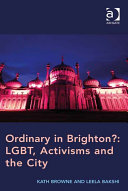

Most ebook files are in PDF format, so you can easily read them using various software such as Foxit Reader or directly on the Google Chrome browser.
Some ebook files are released by publishers in other formats such as .awz, .mobi, .epub, .fb2, etc. You may need to install specific software to read these formats on mobile/PC, such as Calibre.
Please read the tutorial at this link: https://ebookbell.com/faq
We offer FREE conversion to the popular formats you request; however, this may take some time. Therefore, right after payment, please email us, and we will try to provide the service as quickly as possible.
For some exceptional file formats or broken links (if any), please refrain from opening any disputes. Instead, email us first, and we will try to assist within a maximum of 6 hours.
EbookBell Team

4.8
84 reviewsUsing the participatory research project, Count Me In Too, this book investigates the material issues of social/spatial injustice that were pertinent for some - but not all- LGBT people, and explores activisms working in partnership that operated with/within the state. Ordinary in Brighton? explores the unevenly felt consequences of assimilation and inclusion in a city that was compelled to provide a place (literally and figuratively) for LGBT people. Brighton itself is understood to be exceptional, and exploring this specific location provides insights into how place operates as constitutive of lives and activisms. Despite its placing as ’the gay capital’ and its long history as a favoured location of LGBT people, there is very little academic or popular literature published about this city.
This book offers insights into the first decade of the 21st century when sexual and gender dissidents supposedly became ordinary here, rather than exceptional and transgressive. It argues that geographical imaginings of this city as the ’gay capital’ formed activisms that sought positive social change for LGBT people. The possibilities of legislative change and urban inclusivities enabled some LGBT people to live ordinary lives, but this potential existed in tension with normalisations and exclusions. Alongside the necessary critiques, Ordinary in Brighton? asks for conceptualisations of the creative and co-operative possibilities of ordinariness. The book concludes by differentiating the exclusionary ideals of normalisation from the possibilities of ordinariness, which has the potential to render a range of people not only in-place, but commonplace.